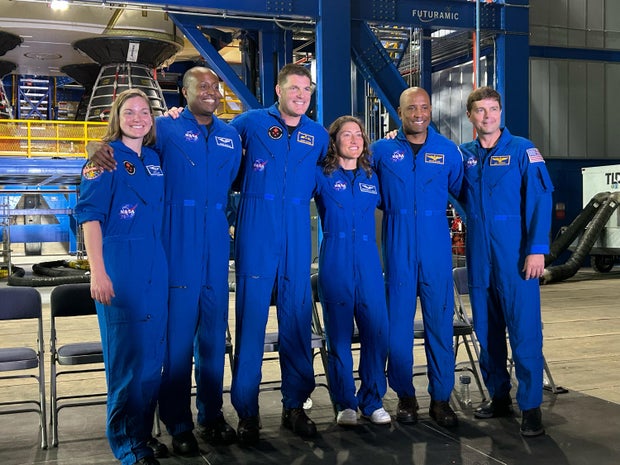Outgoing NASA Administrator Bill Nelson said Wednesday he is optimistic SpaceX founder Elon Musk’s relationship with President-Elect Donald Trump will help ensure NASA receives the funding needed to support a robust agenda, including returning U.S. astronauts to the moon.
Trump has nominated billionaire Jared Isaacman, veteran of two SpaceX Crew Dragon flights to low-Earth orbit, to serve as NASA’s next administrator, prompting speculation Musk’s connections to both men might give him even more influence over NASA space policy than he currently wields.
“On the one hand, I am optimistic because of the relationship that Musk has with Trump that NASA will get the funding that it needs because Musk will be advocating,” Nelson said in an interview with CBS News. “On the other hand, if Musk were to want to cut out other companies in the competition for rockets, that would not be a good thing. And I think Musk is smarter than that.”
NASA
SpaceX already delivers cargo to the International Space Station with its unpiloted Dragon capsules and ferries astronauts to and from the outpost aboard its Crew Dragon spacecraft.
Critical to the Artemis moon program, SpaceX also is building a variant of its Starship rocket to carry astronauts back to the lunar surface in 2027. It will be NASA’s first such landing since the final Apollo mission in 1972.
Amazon founder Jeff Bezos’ company, Blue Origin, also is building a moon lander for NASA, giving the agency alternatives in case one company’s spacecraft is grounded for some reason.
But in the near term, SpaceX is “the horse that we’re going to ride, and we’re expecting that horse to be able to run and run fast,” Nelson said. “And if not, we’ve got another horse and it’s called Blue Origin.”
NASA
At Nelson insistence shortly after taking office, NASA held a second competition for a second lunar lander “based on the principle that you want to have two spacecraft in case something happens to one of them,” Nelson said.
“If ever there’s been a demonstration of the wisdom of having two competitors, it was for the cargo and crew to the space station.”
NASA hired SpaceX and Boeing to build commercial crew ferry ships in the wake of the space shuttle’s retirement in 2011.
While SpaceX has successfully launched 10 sets of astronauts and cosmonauts to the station aboard Crew Dragon capsules, along with five purely commercial flights to orbit, Boeing’s Starliner spacecraft has carried just two crew members to the lab.
Commander Barry “Butch” Wilmore and Sunita Williams took off on Boeing’s first piloted Starliner test flight June 5. The mission was expected to last eight to 10 days, but thruster problems and propellant leaks combined to extend the crew’s stay aboard the ISS while engineers carried out extensive testing.
In the end, NASA decided to bring the Starliner down without its crew, switching Wilmore and Williams to a Crew Dragon and delaying their return to Earth until mid February. On Tuesday, NASA announced launch of the next Crew Dragon, carrying a replacement ISS crew, is slipping to at least the end of March.
That means Wilmore and Williams will log an additional month and a half in orbit before finally coming home after 10 months in space. Asked if he had any words of encouragement for the Starliner astronauts, Nelson said simply “they are true professionals, as are all of our astronauts, and they meet whatever is the need of NASA.”
Future of NASA’s Artemis moon program
The Isaacman nomination has prompted speculation in some quarters that NASA’s Artemis moon program, relying on the agency’s costly Space Launch System rocket and Orion crew capsule, could face major changes, including a possible switch from the SLS to SpaceX’s gargantuan Super Heavy-Starship rocket.
Nelson said a different rocket might be used in the 2030s, but the SLS is the only choice available for moon flights through the end of the current decade.
“Understand, that there is currently one human-rated rocket that has been to the moon and back, and that is SLS,” Nelson said.
NASA launched the first SLS on the program’s maiden flight in 2021, sending an unpiloted Orion capsule on a looping flight around the moon and back. The second SLS is being prepared for launch in the April 2026 timeframe to send four astronauts on a similar out-and-back-again trip around the moon.
William Harwood/CBS News
After that, the Artemis 3 mission is tentatively targeted for launch in 2027. In that flight, an SLS will boost astronauts to the moon in an Orion capsule that will dock with SpaceX’s lander in lunar orbit. From there, two astronauts will descend to touchdown near the moon’s south pole where ice deposits may await discovery.
“Right now, when you add up all of that, you’re talking about a number of years down the road, you’re talking about Artemis 3 landing in mid ’27 and then the others to follow,” Nelson said. “This is fiscal year ’25, we’re talking at least into fiscal year 3031.
“So by that time, is there going to be another rocket that’s going to supersede (SLS)? I do not know the answer to that. But I know that the SLS and the Artemis program are certainly going to be there for the near future.”




